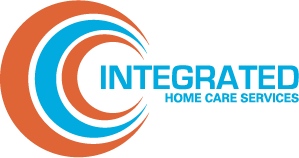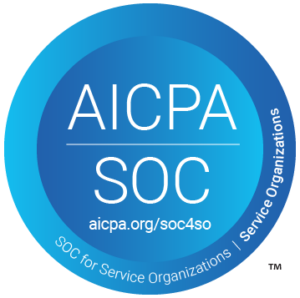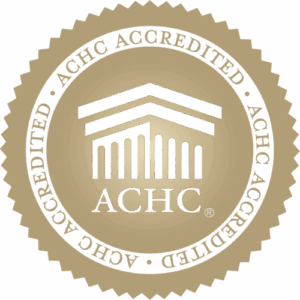As the home care industry continues to expand, plans, providers, and patients find themselves navigating an increasingly complex landscape. Despite the potential for home care to provide quality, cost-effective, holistic treatment, the reality is often far less ideal. Administrative burdens and a lack of coordination lead to poor outcomes, higher costs, and less-than-satisfactory experiences for members.
In a recent webinar, Kat Gesh-Wilson, Vice President-Medicare Advantage, BlueCross BlueShield of South Carolina, and Paul Pino, Chief Growth and Analytics Officer at IHCS joined moderator Dan D’Orazio, CEO of Sage Growth Partners, to explore the role of the home care benefits manager in improving health outcomes and member experiences. Their discussion included insights from a survey of 47 health plan leaders, and some of the biggest takeaways are shared below.
How Significantly Is Home Care Expected to Grow?
Home care is more than a trend; it’s a necessity driven by demographic shifts and healthcare innovation. The latest forecasts predict a skyrocketing demand for home care services in the coming years.
According to the most recent data from the U.S. Bureau of Labor Statistics (BLS), employment of home care and personal aides will grow from 3,636,900 (2021) to 4,560,900 in 2031— a 25% increase. Demand for home care is also expected to grow 7% annually over the next five years, per CMS.
The rising age of the population and increased interest in value-based care are significant factors contributing to this growth. As demand surges, the role of home care benefits managers becomes increasingly vital in scaling up home care services effectively and sustainably. These professionals serve as the nexus between plans, providers, and members—ensuring that services are not just coordinated but also optimized for each patient’s unique needs, as well as the needs of any caregivers in the home environment.
An entity like IHCS affords plans the opportunity to foster relationships with members, which is an essential part of the home care landscape. Gesh-Wilson puts great emphasis on a personalized approach, doing regular check-ins with members to see how they are getting along and to understand the external factors contributing to their home living situation.
“We are a plan that likes to touch base with our members. We reach out to them, we perform surveys, because it’s really important that when we introduce a service to members that they trust they’re going to get the right care at the right time,” she shares. “We’re not just here to process claims. We’re here to cultivate a relationship to make sure the member has what they need.”
What’s Contributing to Higher Costs and Lower Quality?
One of the chief culprits behind both high costs and poor quality is the fragmented nature of the home care system. Providers often work in silos, leading to uncoordinated care, which in turn can cause unnecessary treatments, conflicting medical advice, and even medical errors. This lack of holistic care becomes a considerable challenge for all parties involved: plans, providers, and the people they serve.
An absence of centralized management and poor coordination across the myriad stakeholders in the home care landscape are significant factors driving up costs and diminishing care quality. Without a focused effort to manage benefits and coordinate services, providers and plans face unsustainable cost burdens and care coordination challenges that not only contribute to rising costs, but ultimately affect the member adversely.
Alternatively, coordinated care generates better patient outcomes. Per the Centers for Medicare and Medicaid Services (CMS), “When doctors and other health care providers work together and share information, patients’ needs and preferences are known and communicated at the right time to the right people, and the information is used to provide safe, appropriate, and effective care. This can help to keep patients healthier longer, better manage chronic conditions and experience care that is consistent with their goals.”
Defining the Value of a Home Care Benefits Manager
The role of a home care benefits manager is integral to tackling these challenges. This position serves as a linchpin, coordinating efforts between health plans, providers, and members to ensure seamless, effective care. Overcoming the challenges that contribute to high costs and lower quality in the home care industry requires a multi-dimensional approach. Below are some of the strategies that plans and providers can use.
Centralized Care Coordination: Implementing a centralized system of care coordination can significantly streamline administrative processes and improve communication between stakeholders. This reduces errors and improves outcomes. Technology plays an integral role in coordination, including electronic health records (EHRs), telemedicine, and real-time analytics.
Standardized Care Protocols: Uniform guidelines and procedures across providers can lead to more consistent and better quality of care. Continuous staff training helps ensure protocols remain in place.
Outcome-Based Assessments: Moving away from a fee-for-service model to one that is based on outcomes can incentivize providers to focus on quality rather than quantity, lowering costs in the process.
Preventive Care Focus: Shifting the focus to preventive care can significantly lower costs in the long run. Part of this strategy involves member education programs, which can empower members to make more informed decisions. This not only improves satisfaction but also contributes to better health outcomes and lower costs.
Financial Auditing and Optimization: Regular financial assessments can help identify areas of waste or inefficiency. By streamlining these aspects, it is possible to deliver more cost-effective care without compromising on quality.
Community Partnerships: Collaborating with community organizations can provide additional resources and support for patients, particularly in terms of social determinants of health (SDOH) like housing and nutrition. This holistic approach contributes to better health outcomes, which in turn, can reduce costs.
By adopting these strategies, plans and providers can not only overcome existing challenges but also create a more resilient, efficient, and high-quality home care ecosystem. In an industry where demand is surging, these strategies serve as pillars for sustainable growth and improved member experience.
Reimbursements in the Context of Home Care
One sticking point in home care services is that of reimbursements. If plans and providers are more focused on revenue than care quality, the patient suffers. Per Pino:
“From our standpoint, one thing we realized early on is that if you’re not aligned with the payer from an overall patient outcomes perspective, and a member satisfaction perspective—but rather a cost or reimbursement perspective—you’re not going to achieve the outcomes that are important for everyone. For us, it’s really about managing the patient, meeting medical necessity, and improving outcomes.”
Pino’s perspective encapsulates a forward-thinking approach that sets IHCS apart from others in the home care industry. IHCS’s patient-centric model not only promises to deliver better results for individuals but also positions the company at the forefront of shaping the future of home care services. By emphasizing medical necessity and measurable outcomes, IHCS is forging a pathway more in tune with what members and healthcare payers actually need and want.
Home Care Benefits Management: A Game-Changer for Holistic Care
As the industry braces for increased demand, the time has come to elevate the role and importance of home care benefits management—and resulting holistic care. It’s not just about meeting this demand but exceeding expectations in terms of quality, cost, and member experience. Adopting a centralized approach through effective benefits management can be a game-changer, aligning the interests of all stakeholders and setting a new standard for home care excellence.
In subsequent blogs, we’ll shine a light on additional insights gleaned from the webinar—including why a fragmented approach versus a member-first approach is an important consideration, why partnerships such as that between IHCS and Medicare Advantage entities are so important, and what Pino and Gesh-Wilson view as the future of home care and the home care benefits manager.












